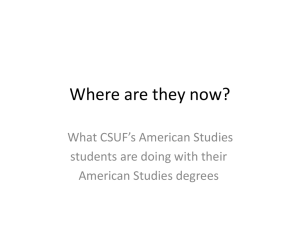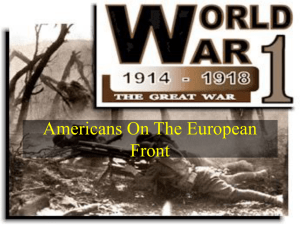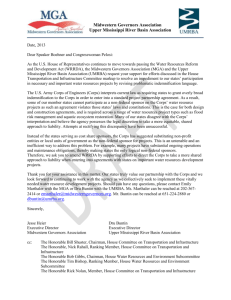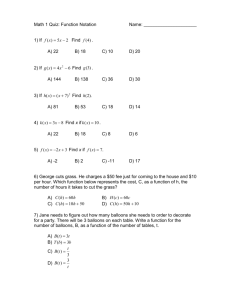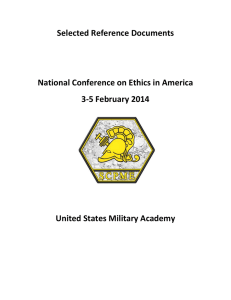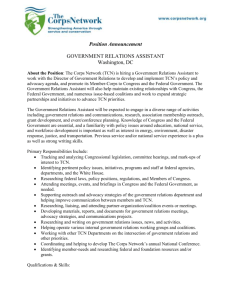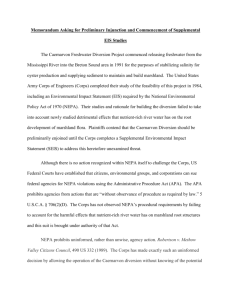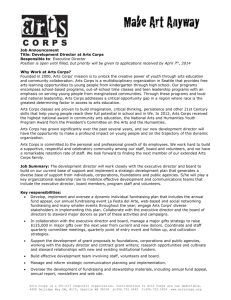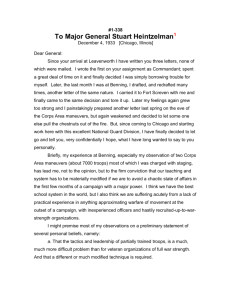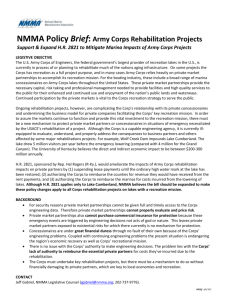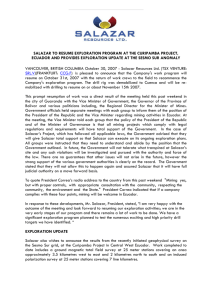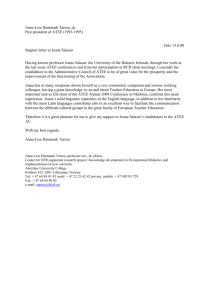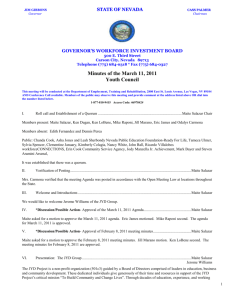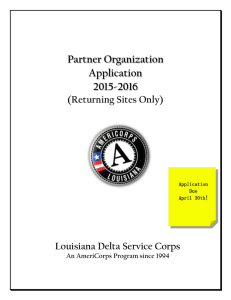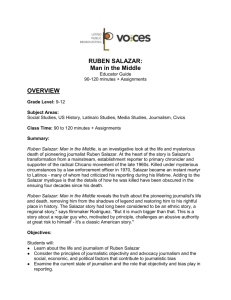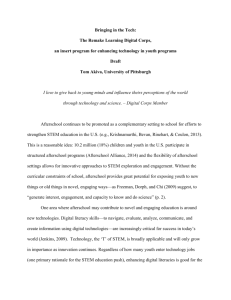Communications and War rough draft1
advertisement
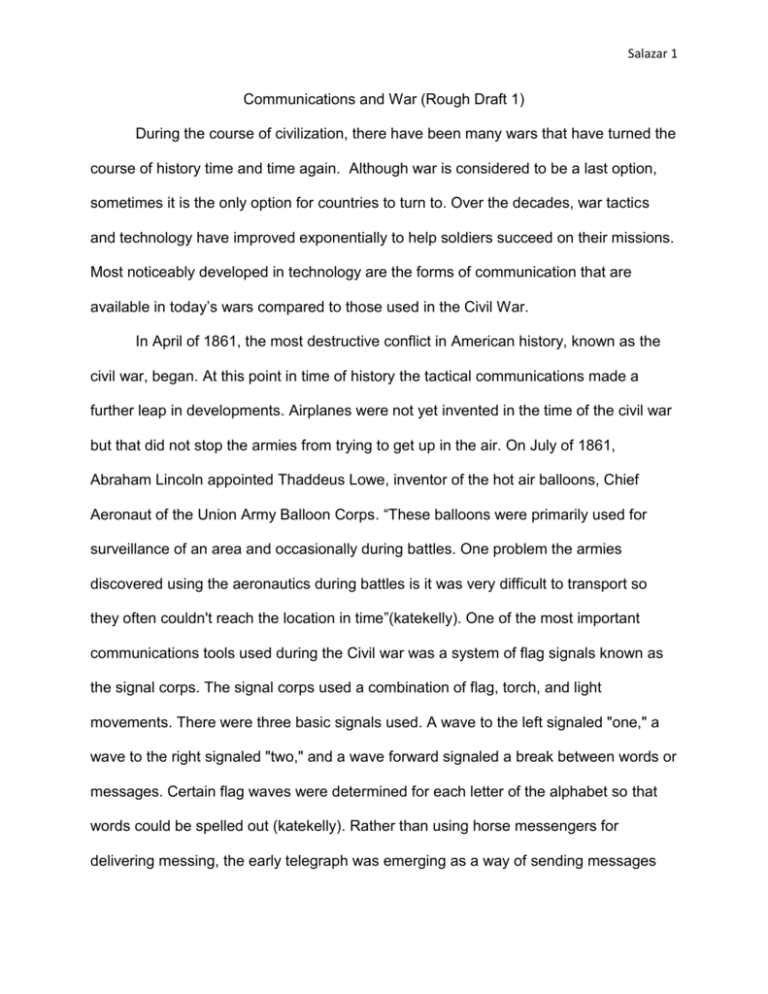
Salazar 1 Communications and War (Rough Draft 1) During the course of civilization, there have been many wars that have turned the course of history time and time again. Although war is considered to be a last option, sometimes it is the only option for countries to turn to. Over the decades, war tactics and technology have improved exponentially to help soldiers succeed on their missions. Most noticeably developed in technology are the forms of communication that are available in today’s wars compared to those used in the Civil War. In April of 1861, the most destructive conflict in American history, known as the civil war, began. At this point in time of history the tactical communications made a further leap in developments. Airplanes were not yet invented in the time of the civil war but that did not stop the armies from trying to get up in the air. On July of 1861, Abraham Lincoln appointed Thaddeus Lowe, inventor of the hot air balloons, Chief Aeronaut of the Union Army Balloon Corps. “These balloons were primarily used for surveillance of an area and occasionally during battles. One problem the armies discovered using the aeronautics during battles is it was very difficult to transport so they often couldn't reach the location in time”(katekelly). One of the most important communications tools used during the Civil war was a system of flag signals known as the signal corps. The signal corps used a combination of flag, torch, and light movements. There were three basic signals used. A wave to the left signaled "one," a wave to the right signaled "two," and a wave forward signaled a break between words or messages. Certain flag waves were determined for each letter of the alphabet so that words could be spelled out (katekelly). Rather than using horse messengers for delivering messing, the early telegraph was emerging as a way of sending messages Salazar 2 from one location to another electronically. Telegraph corps followed troops and put the telegraph poles and wires into position and set them upright to provide communication from the battle front (kidsport). One given fact is how much today's technological advances in communications have improved the soldiers’ odds during times of war. “The results of technology in the twentieth century, which can be seen in the wars being fought in the world today, are known as a Revolution in Military Affairs (RMA). The improvement of the computer and satellite technologies are a couple of examples out of the various developments”(techgallery). Space is a vital component of United States military planning. Types of satellite usage are to be able to perform a number of activities such as: being able understand enemy activity, plan attack strategies, monitor the flanks of deployed troops, watch for shoreline threats to sea lanes, and locate the sources of intercepted signals. These of course are only a partial list of duties performed. “Satellites don't attack directly, but rather they offer what the Pentagon calls "force enhancement"<double check quote within quote(satellites). GPS are used by the military for navigation, tracking, bomb and missile guidance, and rescue missions. GPS systems are a necessity for soldiers to know their own position by troops during war. It allows battle plans to be drawn up with accurate troop position and movement. Now available for tactical communications is the Monax system, giving a persistent wireless broadband network. This system will reduce time spent searching for information and improve battlefield communications and situational awareness which results in mission effectiveness. The Monax is like “being able to place smartphone technology in the Salazar 3 hands of warfighters with a private network that they can take with them anywhere”(spacedaily). Since the Civil war till this day, the military has indeed continued to make advancements in their communication during times of battle. You can literally look back on the developments of the Civil war and clearly see how far along they have come in today's military.

